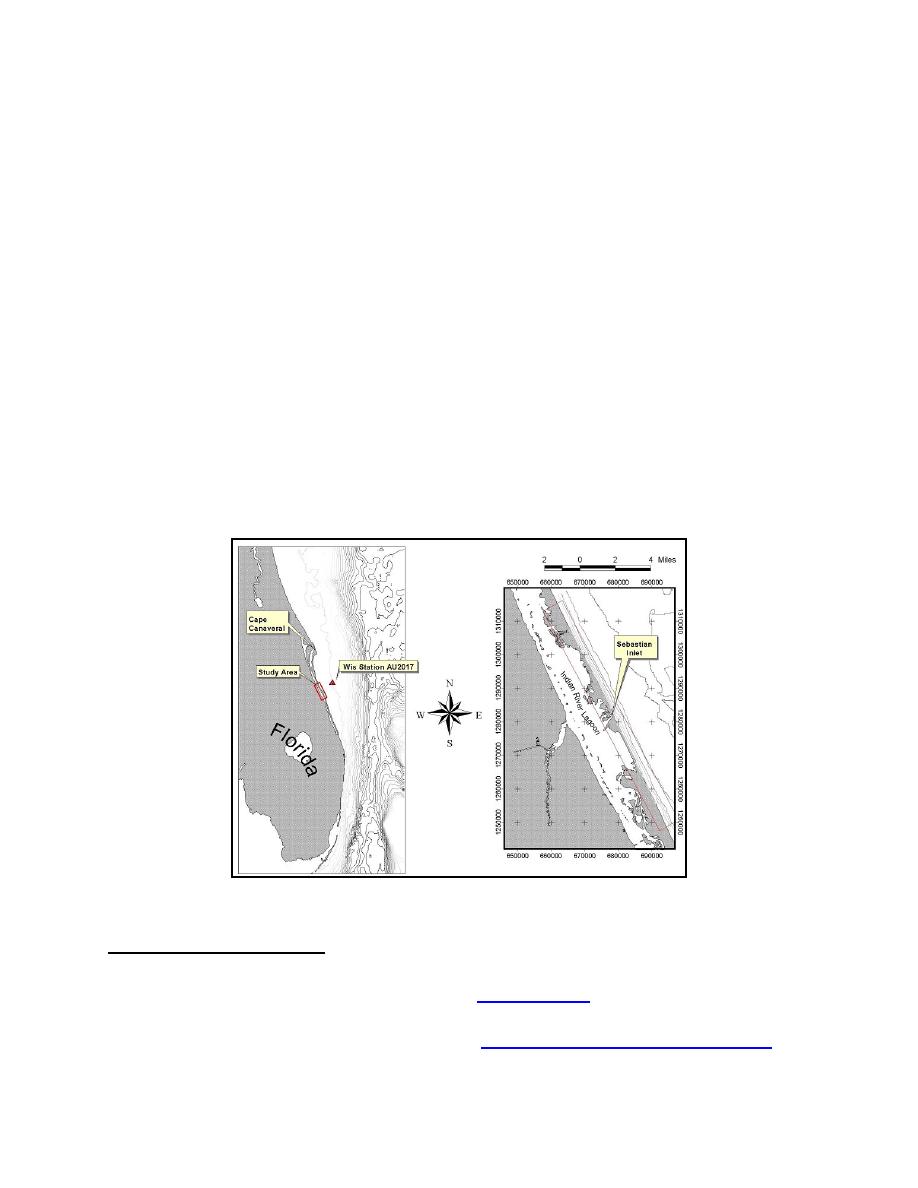
In: Proceedings Coastal Sediments '03. 2003. CD-ROM Published by World Scientific Publishing
Corp. and East Meets West Productions, Corpus Christi, Texas, USA. ISBN 981-238-422-7.
MORPHOLOGIC ANALYSIS OF SEBASTIAN INLET, FLORIDA: ENHANCEMENTS
TO THE TIDAL INLET RESERVOIR MODEL
Abstract: Geomorphic analysis was conducted for Sebastian Inlet, FL to re-formulate an analytic
model of shoal evolution and sediment bypassing. The Tidal Inlet Reservoir Model (Kraus 2002)
was enhanced to include sediment pathways that allow seasonal reversals in littoral sand transport
and episodic sand by- passing from an intra-inlet sand trap. The model was established with the aid
of historical morphologic data from Sebastian Inlet, interpreted together with process data.
INTRODUCTION
Sand management at stabilized tidal inlets has often resulted in unforeseen consequences for the
adjacent shoreface and beach. To quantify the inlet-beach interactions at Sebastian Inlet and
develop a protocol for examining other similar inlet systems, a combination of geomorphic analysis
and analytic models was applied to resolve the long-term change and sediment budget. Sebastian
Inlet, located on the central East Coast of Florida (Fig. 1), is a managed system created at the local
of a former natural inlet and stabilized by offset jetties. The inlet system can be considered
microtidal, having an ocean tidal range of approximately 1 m, a moderate wave climate.
Fig. 1. Location of Sebastian Inlet on east central coast of Florida.
1. Department of Marine and Environmental Systems, Florida Institute of Technology, 150
West University Blvd., Melbourne, FL 32901. Zarillo@fit.edu.
2. U.S. Army Engineer Research and Development Center, Coastal and Hydraulics Laboratory,
3909 Halls Ferry Road, Vicksburg, MS 39180. .
Zarillo et al.



 Previous Page
Previous Page
